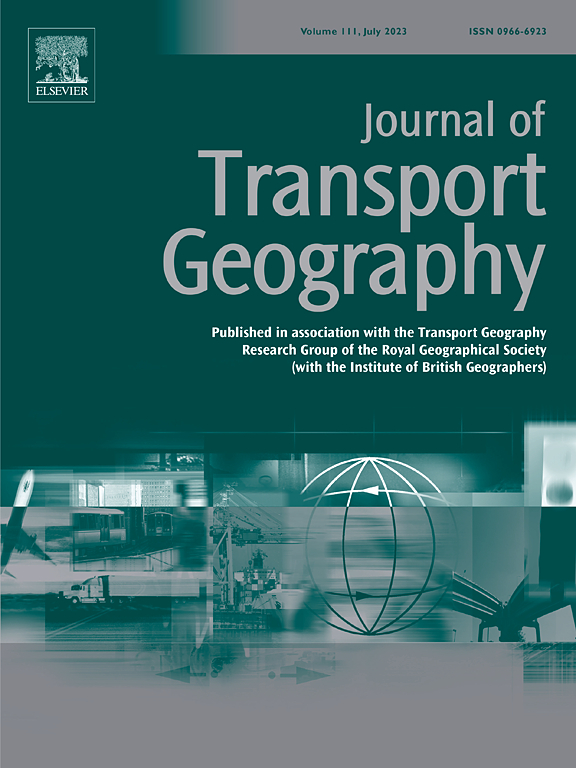Spatial scale effects of transportation, social and natural attributes of street environments on perceived activity opportunities for older adults
IF 5.7
2区 工程技术
Q1 ECONOMICS
引用次数: 0
Abstract
The street environment correlates with perceived activity opportunities for older adults. While numerous studies have examined the transportation and social attributes of street environments, the natural attributes have been less explored. Furthermore, the nonlinear relationship between the street environment and perceived activity opportunities across different spatial scales remains under-researched. We hypothesize that transportation, social, and natural attributes influence perceived activity opportunities, and their nonlinear effects vary across spatial scales. Therefore, we used activity survey data and multi-source big data from Dalian, China. Employing gradient boosted decision tree (GBDT) methods, we evaluated the nonlinear correlation between the street environment and perceived activity opportunities. Our study considered three community life circle scales: 5-min, 10-min, and 15-min. The results indicated that street features varied significantly at different spatial scales. Specifically, factors such as density of street network, diversity of street interface, distance to the nearest public transport station, accessibility of green space, diversion ratio, and distance to the nearest blue space notably influence perceived activity opportunities across these scales. The study also found that the nonlinear correlations between street environments and perceived activity opportunities were prevalent and varied across spatial scales. These results suggest that priorities for street environment improvements should account for these spatial scale variations. Our research provides multi-scale recommendations for the development of sustainable transportation, age-friendly communities, and the promotion of aging in place.
街道环境的交通、社会和自然属性对老年人感知活动机会的空间尺度影响
街道环境与老年人感知到的活动机会相关。虽然许多研究都对街道环境的交通和社会属性进行了研究,但对自然属性的研究却较少。此外,对于不同空间尺度的街道环境与感知到的活动机会之间的非线性关系,研究仍然不足。我们假设,交通、社会和自然属性会影响人们感知到的活动机会,而它们在不同空间尺度上的非线性效应也各不相同。因此,我们使用了中国大连的活动调查数据和多源大数据。利用梯度提升决策树(GBDT)方法,我们评估了街道环境与感知活动机会之间的非线性相关性。我们的研究考虑了三种社区生活圈尺度:5 分钟、10 分钟和 15 分钟。结果表明,街道特征在不同的空间尺度上存在显著差异。具体来说,街道网络的密度、街道界面的多样性、与最近的公共交通站的距离、绿地的可达性、分流比率以及与最近的蓝地的距离等因素在这些尺度上对感知到的活动机会有着明显的影响。研究还发现,街道环境与感知到的活动机会之间普遍存在非线性相关关系,并且在不同的空间尺度上存在差异。这些结果表明,街道环境改善的优先级应考虑这些空间尺度的变化。我们的研究为发展可持续交通、老年友好社区和促进居家养老提供了多尺度建议。
本文章由计算机程序翻译,如有差异,请以英文原文为准。
求助全文
约1分钟内获得全文
求助全文
来源期刊

Journal of Transport Geography
Multiple-
CiteScore
11.50
自引率
11.50%
发文量
197
期刊介绍:
A major resurgence has occurred in transport geography in the wake of political and policy changes, huge transport infrastructure projects and responses to urban traffic congestion. The Journal of Transport Geography provides a central focus for developments in this rapidly expanding sub-discipline.
 求助内容:
求助内容: 应助结果提醒方式:
应助结果提醒方式:


